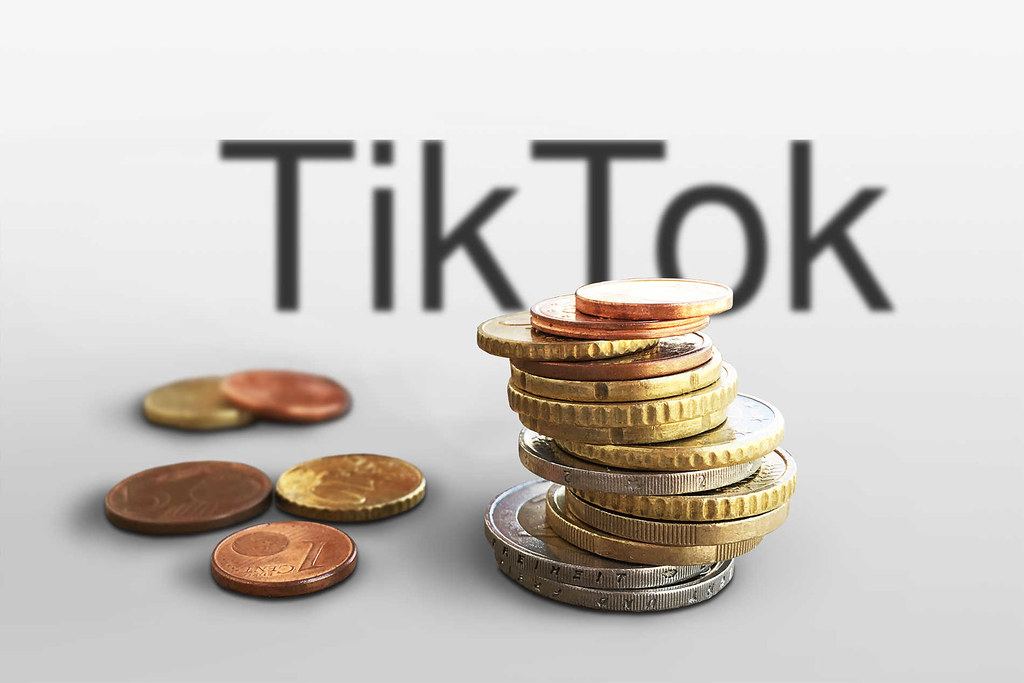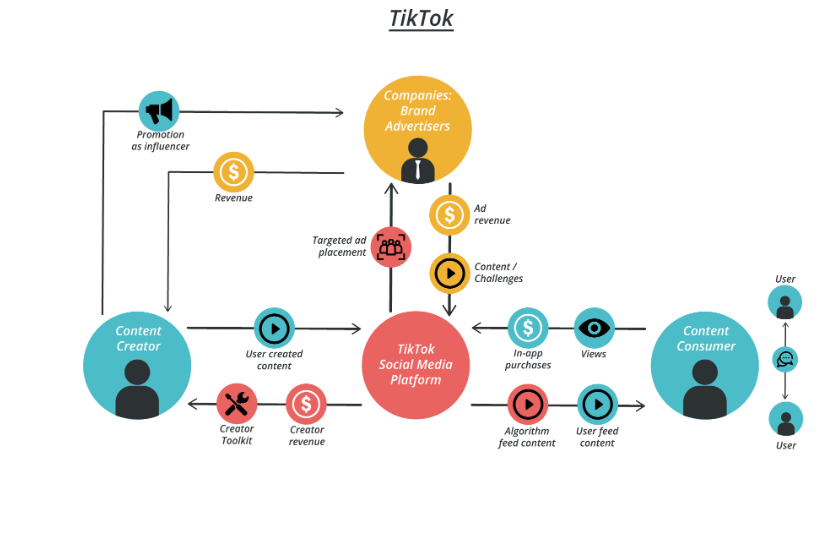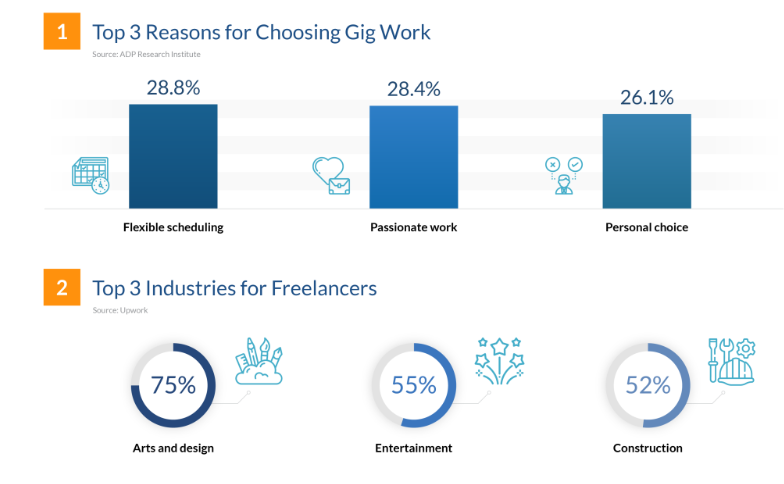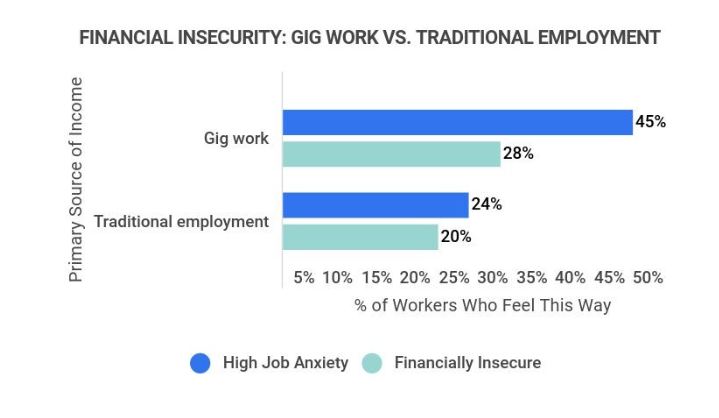Zhiqing Wang

“TikTok-vor-Geld” by Christoph Scholz is licensed under CC BY-SA 2.0.
Introduction
The sharing economy, a revolutionary economic concept, uses digital platforms to enable decentralized exchange of commodities, services, and resources. This paradigm shift prioritizes access above ownership in consumption and ownership. The sharing economy encourages resource efficiency, cost-effectiveness, and community participation, from Uber to Airbnb. Its mission is to use underutilized assets, stimulate cooperation, and create new revenue possibilities. The growth of this sharing ecosystem raises questions about job security, economic inequality, and regulatory frameworks, making it a dynamic and contentious force in modern economies. This essay thoroughly examines how the sharing economy affects the offline real economy. The focus is on how this paradigm change affects income models, both positively and negatively. It seeks to illuminate the complicated relationship between the virtual and physical worlds and assess its effects on individuals, businesses, and the economy.
TikTok revenue model
Short-form video platform TikTok has grown into a global cultural phenomenon with a huge user base. The platform relies on multiple revenue streams from user participation. Advertising is TikTok’s main revenue source as businesses pay to market their products or services to TikTok’s massive user base via its algorithmic content distribution (Jaipong, 2023). This includes sponsored hashtags, challenges, and in-feed ads that blend into users’ content streams. Additionally, TikTok feeds into the growing in-app purchase market. Buyers can purchase virtual gifts for their favorite content providers, improving user experience and monetizing artists directly. User gratitude and content producer financial assistance are mutually beneficial with the virtual gift system (Huang, 2021). Beyond this, TikTok forms strategic alliances and collaborations which includes co-branding marketing initiatives or creating exclusive content with artists and influencers. These agreements boost TikTok’s cultural relevance and user engagement while generating revenue.
Figure 1: TikTok revenue model

Note: From TikTok. Business Model Toolbox, 2021, (https://bmtoolbox.net/stories/tiktok/) Copyright 2021 Business Model Toolbox
Traditional vs. gig economy income sources
Traditional job arrangements and the gig economy have different income models and effects on employees and the economy. People traditionally sought stability and security through job contracts. Fixed salaries with benefits like healthcare, retirement, and paid leave are common under this paradigm (He et al., 2021). Employees and employers form long-term relationships because consistent pay and perks provide financial security. These frameworks may be too stiff to adapt to shifting economic environments (John, 2016). On the hand, the gig economy emphasizes flexibility and short-term engagements, changing the paradigm. The gig workforce; freelancers, independent contractors, and platform-based workers makes money from projects. This flexibility lets people manage numerous revenue sources and customize their engagements to personal or market needs (Bhandari & Bimo, 2020). Gig workers like that they can create their own schedules and chose tasks based on their interests and experience. However, financial stability and social security are threatened by income volatility and the lack of traditional work advantages.
Impacts of Income Diversification
Individuals may now perform both regular jobs and gig labor, diversifying their income. This hybrid method combines regular income with gig work’s flexibility and potential earnings. Diversification reduces the hazards of relying on one revenue source but adds complexity (Schwellnus et al., 2019). Time management and adaptation are needed to manage various obligations, and gig workers may be exposed without standardized benefits. Income diversification has wider economic effects because it can spread risk across sectors and boost economic resilience, but it can also increase income inequality if some groups are excluded (Pinsof, 2015). A balanced approach to worker flexibility and exploitation protection needs subtle policy considerations and a deep grasp of modern work.
Comparative Income Patterns
Traditional and gig economy income patterns show a complicated tapestry of stability, volatility, and income inequality. For stability, traditional jobs offer steady income because workers are financially secure with constant paychecks through contracts and job schedules. However, gig economy labor increases income unpredictability (Pinsof, 2015). Lack of a set income allows for flexibility, however gig availability and service demand might affect revenue. Gig market opportunities determine income stability (John, 2016). When it comes to volatility, gig economy income patterns exhibit a dynamic nature. Gig workers may have times of high demand and high incomes, followed by lower demand and fewer chances. Employment income is more stable than this fluctuation. The gig economy’s flexibility allows people to adapt to changing conditions, perhaps diversifying revenue sources during low demand (Pinsof, 2015). Finally, comparative study shows income inequality distinctions. Traditional employment, with its regulated salaries, may help an organization distribute revenue more evenly. In contrast, the gig economy’s decentralized and merit-based remuneration can create inequities, where high-demand talents or digital platform placement boost profits. Thus, human agency and adaptation affect gig economy income disparity as well as structural causes.
Figure 2: Reasons for choosing gig work

Note: From Market Share & Data Analysis, 2023, Financesonline.com. (https://financesonline.com/gig-economy-statistics/ ) Copy right 2023 Financesonline
Positive and negative impact of the sharing economy
The sharing economy ushers in a wave of positive developments, increasing possibilities and delivering a boost to the local economy. Individuals today have unparalleled access to platforms that allow them to monetize their assets or abilities, generating additional revenue sources. As money travels within communities, this democratization of economic involvement supports local economies (Jaipong, 2023). Small companies and service providers, which were earlier constrained by traditional models, now prosper by connecting with a larger client base made possible by sharing services (Martin, 2019). This good influence spreads across other industries, increasing economic inclusion and contributing to the liveliness of local communities.
Despite its favorable aspects, the sharing economy has negative effects, most notably employment insecurity, exploitation, and industrial upheaval. Job instability is a major concern for gig workers, who lack standard job benefits and protections and face irregular income and unclear prospects (He et al., 2021). Exploitation is a major issue, with certain platforms accused of abusing people through low pay and unstable working circumstances. Furthermore, the disruptive character of the sharing economy may result in the replacement of established sectors, potentially leading in unemployment and economic instability (Mueller, 2017). Navigating these obstacles is critical to ensuring that the sharing economy evolves in accordance with values of justice, worker protection, and long-term economic success.
Figure 3: Gig work vs. traditional economy

Note: From 23+ Essential Gig Economy Statistics Zippia 2023 (https://www.zippia.com/advice/gig-economy-statistics/) Copyright 2023 Zippia
Counterarguments
It is critical to face and engage with any counterarguments that highlight the good parts of this economic transition while evaluating the influence of the sharing economy on offline real economies. While the sharing economy unquestionably delivers exceptional employment freedom and opens doors to novel income alternatives, it is critical to understand the inherent trade-offs (He et al., 2021). The argument is to admit that gig employment fits some lifestyles while underlining the unstable nature of these engagements. The consequence of this flexibility is that Gig employees frequently lack vital benefits and experience job uncertainty (Pinsof, 2015). Creating solutions entails fighting for legislation that protect workers while maintaining the flexibility of the gig economy.
Proponents argue that the sharing economy promotes economic growth and entrepreneurship by democratizing market access. The reply, on the other hand, underlines the need of scrutinizing the collateral harm (Pinsof, 2015). The fast expansion of sharing platforms has the potential to disrupt existing businesses, resulting in job loss and economic insecurity. Solutions need a holistic approach that includes reskilling initiatives, transitional assistance, and regulatory frameworks that balance innovation with industry stability.
Opponents claim that heavy government regulation stifles innovation in the sharing economy. The response navigates this by conceding the possibility of overregulation while emphasizing the importance of a regulatory framework (Schwellnus et al., 2019). It is critical to strike a balance; regulatory measures should safeguard employees and consumers without suffocating the entrepreneurial spirit of the sharing economy. Collaborative efforts among industry players, government bodies, and worker groups can result in policies that promote responsible growth, guaranteeing the long-term survival of the sharing economy.
Conclusion
In conclusion, the influence of the sharing economy on the offline real economy is a dynamic interplay of advantages and downsides. While technology brings with it new potential and economic vibrancy, it also brings with it new concerns such as employment instability and industrial upheaval. Navigating this terrain necessitates an appropriate balance recognizing the benefits while addressing the drawbacks. Creating a sustainable future necessitates joint policy initiatives that support innovation without jeopardizing worker rights. Finding equilibrium in order to traverse the complexity of the sharing economy becomes critical for creating a future where economic development is inclusive, resilient, and cognizant of the different demands of workers and communities.
Reference
Bhandari, A., & Bimo, S. (2020). TikTok and the “algorithmized self”: A new model of online interaction. AoIR Selected Papers of Internet Research.
He, X., Hua, K., Ji, C., Lin, H., Ren, Z., & Zhang, W. (2021, December). Overview on the Growth and Development of TikTok’s Globalization. In 2021 3rd International Conference on Economic Management and Cultural Industry (ICEMCI 2021) (pp. 666-673). Atlantis Press. https://www.atlantis-press.com/proceedings/icemci-21/125965906
Huang, B. (2021, March). The reasons for Douyin’s success from the perspective of business model, algorithm and functions. In 6th International Conference on Financial Innovation and Economic Development (ICFIED 2021) (pp. 320-325). Atlantis Press. https://www.atlantis-press.com/proceedings/icfied-21/125954329
Jaipong, P. (2023). Business Model and Strateg: A Case Study Analysis of TikTok. Advance Knowledge for Executives, 2(1), 1-18. https://papers.ssrn.com/sol3/papers.cfm?abstract_id=4335962
John, N. A. (2016). The Age of Sharing. Germany: Polity Press.
Martin, F., Dwyer, T. (2019). Sharing News Online: Commendary Cultures and Social Media News Ecologies. Germany: Springer International Publishing.
Mueller, M. (2017). Will the Internet Fragment? Sovereignty, Globalization and Cyberspace. Germany: Polity Press.
Pinsof, J. (2015). A new take on an old problem: employee misclassification in the modern gig-economy. Mich. Telecomm. & Tech. L. Rev., 22, 341.
Schwellnus, C., Geva, A., Pak, M., & Veiel, R. (2019). Gig economy platforms: Boon or Bane?.
TikTok. (2021, May 6). TikTok. Business Model Toolbox. https://bmtoolbox.net/stories/tiktok/
Zippia. 2023 “23+ Essential Gig Economy Statistics [2023]: Definitions, Facts, And Trends On Gig Work” Zippia.com. Feb. 16, , https://www.zippia.com/advice/gig-economy-statistics/
Chang, J. (2023, August 16). 40 gig economy statistics you must learn: 2023 Market Share & Data Analysis. Financesonline.com. https://financesonline.com/gig-economy-statistics/

